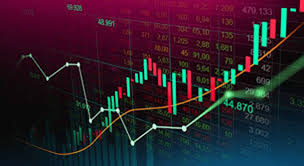
Mastering Forex Trading: Your Ultimate Guide to Success
In today’s fast-paced financial landscape, Forex trading has emerged as one of the most lucrative avenues for generating wealth. As a decentralized global market, Forex allows traders to buy currencies and speculate on their value fluctuations. Whether you are a beginner looking to dip your toes into trading or a seasoned professional wanting to sharpen your strategies, this guide will provide you with the insights you need. For a comprehensive trading experience, consider exploring forex trading site kuwait-tradingplatform.com, a platform designed to give you all the tools you require to thrive in the Forex marketplace.
Understanding the Forex Market
The Forex market, also known as the foreign exchange market, is the largest financial market in the world, with a daily trading volume exceeding $6 trillion. Unlike centralized markets, Forex is open 24 hours a day, five days a week, providing traders with ample opportunities to engage in trading activities. The exchange of currencies takes place in pairs, like EUR/USD or GBP/JPY, allowing traders to speculate on the relative strength or weakness of one currency against another.
Getting Started with Forex Trading
Before you dive into Forex trading, it’s essential to understand how it works. Here are some key steps to get started:
- Educate Yourself: Understanding the key terms, concepts, and strategies is crucial. Take advantage of online courses, tutorials, and other resources available.
- Choose a Trading Platform: Your choice of trading platform will significantly affect your trading experience. Look for platforms with user-friendly interfaces, robust analytics tools, and low transaction fees.
- Create a Trading Plan: A well-structured trading plan will help you manage risks and set profit targets. Include your risk tolerance, trading strategies, and investment goals in your plan.
- Practice with a Demo Account: Most trading platforms, including kuwait-tradingplatform.com, offer demo accounts. Use these to practice trading without risking real money.
Key Strategies for Successful Forex Trading
Success in Forex trading largely depends on the strategies you employ. Here are some popular trading strategies:

1. Scalping
This strategy involves making numerous small trades throughout the day, capitalizing on minor price movements. Scalpers often rely on technical analysis and rapid entry and exit from positions.
2. Day Trading
Day trading involves buying and selling currencies within a single trading day. The objective is to close all positions before the market closes to avoid overnight risks. This strategy requires a deep understanding of market movements and trends.
3. Swing Trading
Swing trading focuses on capturing price swings in the market. Traders hold positions for several days or weeks, benefiting from the currency’s fluctuating momentum.
4. Position Trading
This long-term strategy involves holding onto a currency pair for an extended period, often based on fundamental analysis. Position traders look for substantial gains and are less concerned with short-term fluctuations.
The Importance of Risk Management
Risk management is vital for sustaining your trading endeavors. Here are key principles to consider:

- Set Stop-Loss Orders: A stop-loss order is a tool that helps you limit potential losses by automatically closing a trade at a predetermined price.
- Use Proper Position Sizing: Never risk more than a small percentage of your trading capital on a single trade, generally recommended at around 1-2%.
- Diversify Your Portfolio: Diversifying your currency pairs can help reduce risk. Avoid putting all your capital into one position.
Staying Updated with Market Analysis
To make informed trading decisions, you must be aware of the latest market trends and news. There are two main types of analysis used in Forex trading:
1. Fundamental Analysis
This approach looks at economic indicators, geopolitical events, and central bank policies that can affect currency values. Understanding these factors can provide insights into future price movements.
2. Technical Analysis
Technical analysis involves the evaluation of historical price patterns and trading volumes. Traders use charts, indicators, and various tools to predict future price movements based on past behavior.
Final Thoughts
Forex trading can be both exciting and profitable, but it requires a solid understanding of the market and a disciplined approach. By following the strategies outlined in this guide and continuously educating yourself, you can improve your chances of success in this dynamic market. Remember, the right trading platform, such as kuwait-tradingplatform.com, plays a vital role in your trading journey by providing you with the necessary tools to analyze and execute your trades effectively.
Above all, patience and discipline are paramount. Markets will swing, and losses are inevitable. However, maintaining a long-term perspective and adhering to your trading plan will help you navigate the challenges of Forex trading effectively.